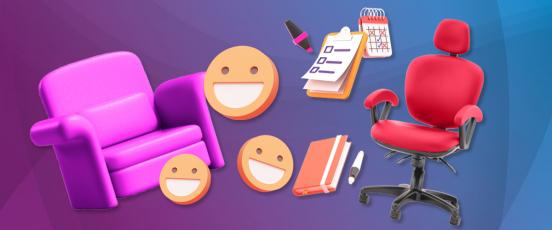The Curious Ways In Which We Can View Future Technology

If we turn and look back, we see a continual change and re-invention of our time at work and of our adoption of technology.
I love patterns, we all do - it could be watching sparrows effortlessly changing directions on a spring evening or the dance of bees communicating whatever drives their industrious ambitions for the best nectar. One of the patterns I return to on a regular basis is the way in which we view technology through the lens of time.
Clearly, there are a number of camps here in terms of the enthusiasm and alacrity - or otherwise of individual’s anticipation and subsequent adoption of new technology. As we project forward, beyond the twelve-month horizon, for some the world becomes more dark, sterile and Orwellian - for others anything is possible and our greatest effort will be in making the choice of how we expend our limitless leisure time. Much has been made of the march of the machines and its relentless capacity to displace jobs. The recent narrative in the USA is of a return of manufacturing jobs to their shores – a pointless pursuit given the fragmentation and re-hyphenation of tasks and workflows through a combination of automation, re-tasking of human roles and outsourcing of non-core activities over the last 20 years.
If we turn and look back, we see a continual change and re-invention of our time at work and of our adoption of technology both at work and at home. There have certainly been a significant number of work roles that have not only been displaced but also subsequently forgotten about – the net effect being social and health pressures that will take generational investment to reconcile and resolve. Overall, we have seen significant improvements in all aspects of education, health, personal freedoms, opportunity and mobility. Most significantly, new roles continue to appear which demand hybrid skills, agility and that in turn, develop a further branch of roles.
The two main areas I would like to consider today are; the organisational capabilities of learning, adapting, enquiring and reshaping - and technology as magic.
Organisational capabilities – from Peter Senge, to MOOCs, to lifelong learning and micro-degrees we have been trying to create organisations equipped with the capabilities ready for any eventuality. Yet we cannot ignore the diverse appetite of our external customers and our internal customer - our colleagues - when it comes to how they wish to interact with people, products and services. Employee engagement research is providing the undeniable truth that engaged and motivated colleagues rapidly foster internal and external loyalty and enthusiasm - that in turn drives revenue and profit. Knowing what we know, it is still surprising that most organisations invest in the re-imagining of the customer experience, leveraging the latest technology and channels but leave their internal customers to fill out paper based or archaic online forms with systems that were designed without any customer in mind.
It is therefore the personal and organisational capability of being inquisitive, which gains my highest ranking. The need for cognition, often used via a proxy of a University Education, is a mainstay of organisations to build their capabilities but this may be effected latently rather than patently in organisational thinking. With the changing field of education the scope, value and very meaning of a University Education will change.
Technology as magic – technology, done right is magic. You wave your hand, speak some words and a spell is observed by all around. Consumer technology moves ever closer to this concept where processes, we never even considered in the past as manual, are automated. We sit wondering how we ever coped before the discovery of this aid. Looking back, we see that the adoption of the right technology was seamless, effortless and took place almost overnight – how far we have come. Harry Potter was always going to win; he had the right attitude, the right friends and the right magic on his side. When we look at the right technology, it does not get in the way, it changes work but does not necessary displace jobs and it augments our personal and organisational capabilities.
Personal assistants and “Bots” provide a natural language, conversational led approach with the interface designed by the user to meet their personal needs. The technology is no longer in the way and magic occurs. Think of all the performance reviews, check-ins and engagement surveys that are designed which put formality, forms and functions in the way of the very people you seek to gain true sentiment from.
Apply analytics to that world and - instead of viewing graphs, patterns and investing significant time and effort in design and re-design for your customers - you can simply chat to them through “bots” about the trends and decision options to get them to their goals.
Guided conversations for managers ensure consistency, clarity and mitigate risks and costs.
Underlying sentiment is easily recognised and can be used to mitigate future predicted negative effects or maximise opportunities.
This is the future of the augmented human and it is magic.
Most importantly, for some of us it is now providing competitive advantage.



